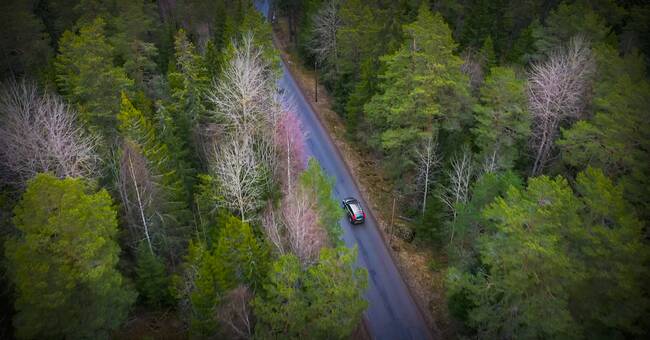The forest industry, which includes everything from felling to timber, pulp and paper production, emits around 80 million tonnes of carbon dioxide annually, say researchers at Umeå University.
But these emissions are not visible in the Swedish official statistics, despite the fact that they are far more than Sweden's total emissions.
The reason is that the forest industry has an exception which means that its emissions are not counted.
This is because the forest also helps to reduce carbon dioxide in the air.
The forest is a huge climate resource
In total, the Swedish forest is estimated to annually vacuum the air of 120 million tonnes of carbon dioxide.
When the forest industry's emissions of 80 million tonnes are deducted, the industry's net contribution to the carbon dioxide balance will still be a plus, ie a reduction in Sweden's total emissions.
- But the forest has an enormous potential to contribute much more to the climate, says Stig Olof Holm, forest researcher at Umeå University.
But then we have to completely change today's forestry and stop clear-cutting and let the trees grow, he says.
Big quarrel among forest researchers
But it is not a solution that the forest industry supports.
In fact, the debate between different forest researchers about how the forest should best contribute to the climate has become so infected that many researchers no longer talk to each other.
- It is not the forest industry's emissions that are the problem, says Rolf Björheden, researcher at the forestry institute Skogforsk.
- The forest can not be our alibi to continue with other emissions, he continues.
According to him, the forest industry is making a major contribution to climate work by manufacturing products from wood that can replace fossil-based products.
The clear-cut emits CO2
Today, clear-cutting is still the method used by forest companies in the first place, but clear-cutting leads to large amounts of carbon dioxide being released from the soil many years after felling, even if new trees are replanted.
- It takes up to 20-40 years before new trees have grown enough to compensate for the emissions caused by felling.
We do not have that time, says natural geographer Anders Lindroth who works with measuring carbon dioxide levels at clear-cutting.
By 2030, Sweden must have halved its climate emissions.
Everyone agrees that the forest will play an important role, but the question is in what way.
Watch Vetenskapens Världs series "Slaget om skogen" in seven parts on SVTplay
Do not miss anything about the climate! Receive SVT's newsletter in your inbox every week.

